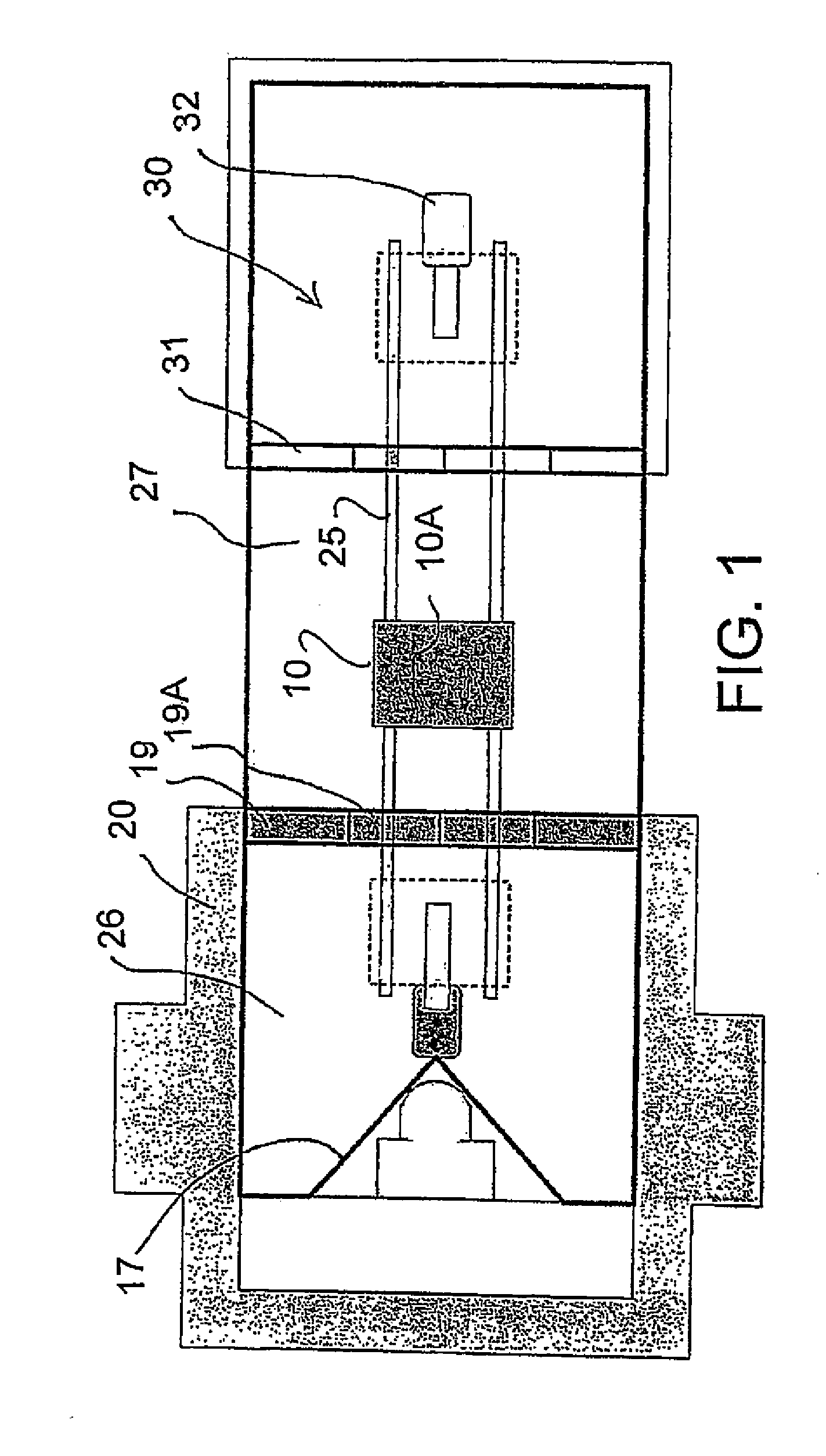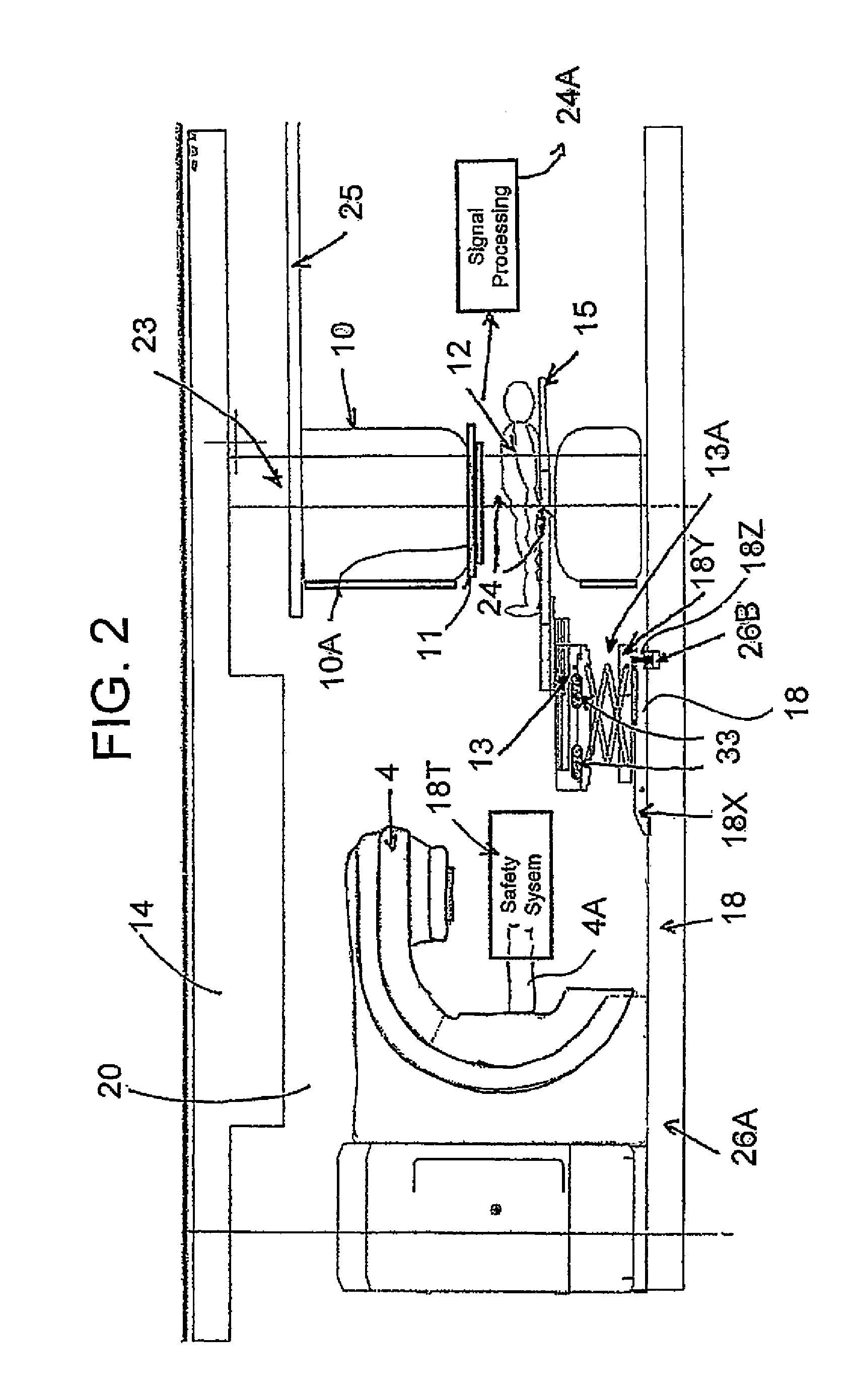Patient Alignment in MRI Guided Radiation Therapy
a radiation therapy and guided radiation technology, applied in the field of patient alignment in guided radiation therapy, can solve the problems of increasing the possibility of secondary rt-induced cancer, significant impact of patient quality of life, and collapsing tissue damage, and achieves superior soft tissue contrast of mr, ensure patient safety, and ensure the accuracy of the guided radiation therapy procedur
- Summary
- Abstract
- Description
- Claims
- Application Information
AI Technical Summary
Benefits of technology
Problems solved by technology
Method used
Image
Examples
Embodiment Construction
[0167]In FIGS. 1 to 5 is shown a schematic diagram of the MRI and external beam RT therapy system within the external beam bunker room configuration. This diagram includes a magnet 10, having a bore 10A into which a patient 12 can be received on a patient couch top 15, which is attached to a patient couch 13.
[0168]The movable magnet is carried on a rail system 25 with a support 23 suspended on the rail system. Further details of this construction are available from published US application 2008 / 0038712 published Feb. 14, 2008 assigned to the present assignees, the disclosure of which is incorporated herein by reference.
[0169]A suitable radiation therapy system 4 is available from Varian. This can use different radiation including proton beams, brachytherapy or X-ray. The Varian radiation therapy system is capable of delivering therapeutic radiation to the patient using an x-ray beam formed through a multi-leaf collimator to modulate the intensity of the radiation delivered.
[0170]The...
PUM
 Login to View More
Login to View More Abstract
Description
Claims
Application Information
 Login to View More
Login to View More - R&D
- Intellectual Property
- Life Sciences
- Materials
- Tech Scout
- Unparalleled Data Quality
- Higher Quality Content
- 60% Fewer Hallucinations
Browse by: Latest US Patents, China's latest patents, Technical Efficacy Thesaurus, Application Domain, Technology Topic, Popular Technical Reports.
© 2025 PatSnap. All rights reserved.Legal|Privacy policy|Modern Slavery Act Transparency Statement|Sitemap|About US| Contact US: help@patsnap.com



